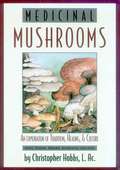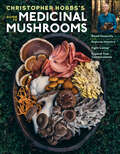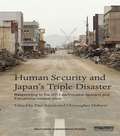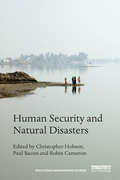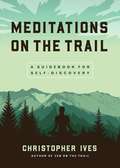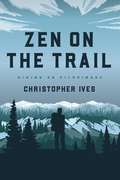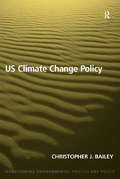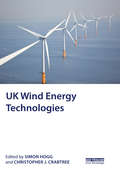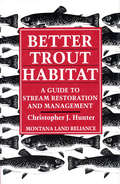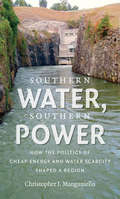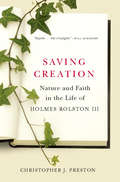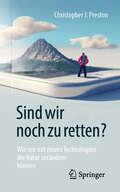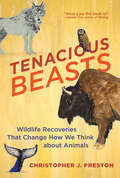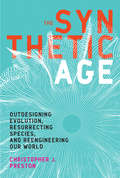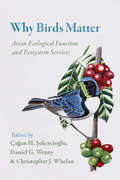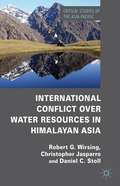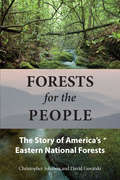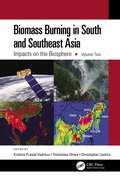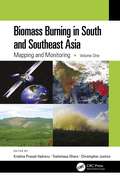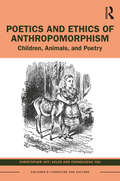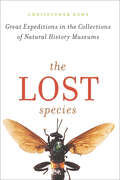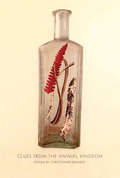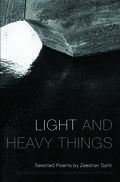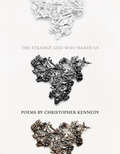- Table View
- List View
Medicinal Mushrooms: An Exploration of Tradition, Healing and Culture
by Christopher HobbsMedicinal Mushrooms is a modern handbook for exploring and understanding the rich traditions of healing fungi in Eastern and Western cultures. Author Christopher Hobbs thoroughly documents and details the nutritional and health benefits of over 100 species of edible fungi. Here is the most complete work on the cultural, health-promoting, and medicinal uses of mushrooms ever published!
Christopher Hobbs's Medicinal Mushrooms: Boost Immunity, Improve Memory, Fight Cancer, Stop Infection, and Expand Your Consciousness
by Christopher Hobbs L.Ac., AHGMushrooms have been used as medicine for thousands of years and their value in boosting immunity, improving memory, and even fighting cancer is being recognized and documented in scientific research. Christopher Hobbs, a mycologist and herbalist at the forefront of contemporary research, profiles the most powerful medicinal mushrooms and explains the nutritional and medicinal compounds in each one. Detailed instructions cover how to select, store, and prepare each variety for use. Whether readers are growing or foraging their own mushrooms, or sourcing them from a local provider, this essential handbook will guide them in making health-boosting medicine.
Human Security and Japan's Triple Disaster: Responding to the 2011 earthquake, tsunami and Fukushima nuclear crisis (Routledge Humanitarian Studies)
by Paul Bacon Christopher HobsonJapan has been one of the most important international sponsors of human security, yet the concept has hitherto not been considered relevant to the Japanese domestic context. This book applies the human security approach to the specific case of the earthquake, tsunami and nuclear accident that struck Japan on 11 March 2011, which has come to be known as Japan's ‘triple disaster’. This left more than 15,000 people dead and was the most expensive natural disaster in recorded history. The book identifies the many different forms of human insecurity that were produced or exacerbated within Japan by the triple disaster. Each chapter adds to the contemporary literature by identifying the vulnerability of Japanese social groups and communities, and examining how they collectively seek to prevent, respond to and recover from disaster. Emphasis is given to analysis of the more encouraging signs of human empowerment that have occurred. Contributors draw on a wide range of perspectives, from disciplines such as: disaster studies, environmental studies, gender studies, international relations, Japanese studies, philosophy and sociology. In considering this Japanese case study in detail, the book demonstrates to researchers, postgraduate students, policy makers and practitioners how the concept of human security can be practically applied at a policy level to the domestic affairs of developed countries, countering the tendency to regard human security as exclusively for developing states.
Human Security and Natural Disasters (Routledge Humanitarian Studies)
by Christopher Hobson, Paul Bacon and Robin Cameron"Human security" is an approach that rejects the traditional prioritization of state security, and instead identifies the individual as the primary referent of security. It offers a way of broadening our perspective, and recognizing that the most pressing threats to individuals do not come from interstate war, but from the emergencies that affect people every day, such as famine, disease, displacement, civil conflict and environmental degradation. Human security is about people living their lives with dignity, being free from "fear" and "want". To date, there has been a strong tendency to focus on insecurity caused by civil conflict, with less attention on issues to do with environmental security. This volume addresses the threat posed by natural disasters, which represent an increasingly major human security threat to people everywhere. In looking at natural disasters, this book also refines the human security approach. It does so through developing its previously unexplored interdisciplinary potential. This volume explicitly seeks to bring the human security approach into conversation with contributions from a range of disciplines: development, disaster sociology, gender studies, international law, international relations, philosophy, and public health. Collectively these scholars unpack the "human" element of "natural" disasters. In doing so, an emphasis is placed on how pre-existing vulnerabilities can be gravely worsened, as well as the interconnected nature of human security threats. The book presents a variety of case studies that include the Indian Ocean tsunami, Hurricane Katrina, the 2010 Haiti earthquake, and the 2011 "triple disasters" in Japan.
Meditations on the Trail: A Guidebook for Self-Discovery
by Christopher IvesDiscover how to explore and deepen your connection to nature with a rich array of do-anywhere meditations.Meditations on the Trail offers a rich array of do-anywhere meditations that will help you explore and deepen your connection to nature, and yourself, in new ways, making the most of your time on the trail. This small book—perfect for throwing in a daypack or a back pocket as you head out for the trail—is filled with practices to take you into the heart of the natural world and uncover your most vibrant self. You&’ll return home grateful, more aware of interconnection, and maybe just a little wiser. &“For walkers of all paces and geographies, this lovely book is a helpful guide for savoring moments on the trail, and feeling how deeply related we are to all existence.&”—Stephanie Kaza, author of Conversations with Trees: An Intimate Ecology
Zen on the Trail: Hiking as Pilgrimage
by Christopher IvesDiscover how hiking can be a kind of spiritual pilgrimage—calming our minds, enhancing our sense of wonder, and deepening our connection to nature.Evoking the writings of Gary Snyder, Bill Bryson, and Cheryl Strayed, Zen on the Trail explores the broad question of how to be outside in a meditative way. By directing our attention to how we hike as opposed to where we’re headed, Ives invites us to shift from ego-driven doing to spirit-filled being, and to explore the vast interconnection of ourselves and the natural world. Through this approach, we can wake up in the woods on nature’s own terms. In erudite and elegant prose, Ives takes us on a journey we will not soon forget. This book features a new prose poem by Gary Snyder.
US Climate Change Policy (Transforming Environmental Politics and Policy)
by Christopher J. BaileyThe United States is often perceived as sceptical, if not hostile, to the need to address man-made climate change. US government policy has undoubtedly disappointed environmentalists and scientists who believe more concerted action is needed, but a careful examination of the evidence reveals a number of policy actions designed to investigate, mitigate, and adapt to climate change have been implemented. Laws, regulatory action, and court rulings have led to advances in climate science, action to reduce levels of greenhouse gas emissions and efforts to prepare for the potential consequences of climate change. In this important book Chris Bailey explains and details the challenges and achievements of US climate change policy from its origins to the present day.
UK Wind Energy Technologies
by Simon Hogg Christopher J. CrabtreePhase 1 of the EPSRC SUPERGEN Wind programme began in March 2006 and work continued under Phase 2 until March 2014. The strategic aim was to re-establish a strong research community in wind energy technologies, across the UK’s leading academic and industrial research organisations. UK Wind Energy Technologies gives a comprehensive overview of the range of wind energy research undertaken in the UK under Phases 1 & 2 to achieve this goal. Specific topics covered in the book include: wind resource assessment, turbine array layout, environmental interactions, control of turbines, drive train reliability and condition monitoring, turbine array electrical connection, power transmission to grid, assessment of operations and maintenance strategies, and the analysis of turbine foundations and structures. Since the completion of Phase 2 the Supergen Wind consortium partners have formed a networking Hub, which is now the principal national coordinating body for academic research into wind energy in the UK. This book will be of interest to researchers and engineers from industry and academia and also provides workers from other countries with an overview of the range of activity within the UK resulting from the SUPERGEN Wind programme to date.
Better Trout Habitat: A Guide To Stream Restoration And Management
by Montana Land Reliance Christopher J. HunterBetter Trout Habitat explains the physical, chemical, and biological needs of trout, and shows how climate, geology, vegetation, and flowing water all help to create trout habitat.
Southern Water, Southern Power: How the Politics of Cheap Energy and Water Scarcity Shaped a Region
by Christopher J. ManganielloWhy has the American South--a place with abundant rainfall--become embroiled in intrastate wars over water? Why did unpredictable flooding come to characterize southern waterways, and how did a region that seemed so rich in this all-important resource become derailed by drought and the regional squabbling that has tormented the arid American West? To answer these questions, policy expert and historian Christopher Manganiello moves beyond the well-known accounts of flooding in the Mississippi Valley and irrigation in the West to reveal the contested history of southern water. From the New South to the Sun Belt eras, private corporations, public utilities, and political actors made a region-defining trade-off: The South would have cheap energy, but it would be accompanied by persistent water insecurity. Manganiello's compelling environmental history recounts stories of the people and institutions that shaped this exchange and reveals how the use of water and power in the South has been challenged by competition, customers, constituents, and above all, nature itself.
Saving Creation
by Christopher J. PrestonHolmes Rolston III has long been recognized as the "father of environmental ethics." Internationally renowned for the synthesis he has found in evolutionary biology and Christianity, Rolston has followed an immensely interesting life course. In this compelling biography, Rolston's story is traced from childhood to the present, detailing the process by which he has come to hone his profound philosophies. Culled from countless interviews with Rolston himself, along with his family and colleagues, this biography is both an engaging life story and a compendium of Rolston's thoughts on the value of nature, resource management, aesthetics, international development, and the relationship of culture to nature, wilderness, and natural theology.
Saving Creation
by Christopher J. PrestonHolmes Rolston III has long been recognized as the "father of environmental ethics." Internationally renowned for the synthesis he has found in evolutionary biology and Christianity, Rolston has followed an immensely interesting life course. In this compelling biography, Rolston's story is traced from childhood to the present, detailing the process by which he has come to hone his profound philosophies. Culled from countless interviews with Rolston himself, along with his family and colleagues, this biography is both an engaging life story and a compendium of Rolston's thoughts on the value of nature, resource management, aesthetics, international development, and the relationship of culture to nature, wilderness, and natural theology.
Sind wir noch zu retten?: Wie wir mit neuen Technologien die Natur verändern können
by Christopher J. PrestonNanotechnologie, synthetische Biologie, Wiedererweckung ausgestorbener Arten und Geoengineering – werden Menschen die Natur in Zukunft mit solchen Methoden grundlegend umgestalten? Man könnte es sich vorstellen.Auf der Erde gibt es keinen von Menschen unberührten Ort mehr – das hat wohl jeder schon einmal gehört. Aber die Bedeutung dieser Tatsache erschöpft sich nicht in Statistiken, die Gletscherschmelze und Artensterben dokumentieren. Vielmehr kennzeichnet sie den Beginn einer neuen Epoche der Erdgeschichte. Und das Auffälligste an diesem Synthetischen Zeitalter, so Christopher Preston, sind nicht nur die Auswirkungen des Menschen als solche, sondern die Veränderungen, die wir von nun an gezielt und absichtlich herbeiführen werden. Neue Technologien werden uns die Macht verleihen, viele grundlegende Abläufe der Natur selbst in die Hand zu nehmen. Damit verlassen wir nicht nur das Holozän und treten ins Anthropozän ein; wir lassen auch eine Zeit hinter uns, in der globaler Wandel nicht nur die unbeabsichtigte Folge einer ungezügelten Industrialisierung ist. Mit einer von Ingenieuren und Technikern gestalteten Welt beginnt das erste Synthetische Zeitalter unseres Planeten.Preston beschreibt eine Reihe von Technologien, die den „Stoffwechsel“ der Erde umgestalten werden: Nanotechnologie gibt den natürlichen Formen der Materie eine neue Struktur; „molekulare Produktion“ eröffnet unzählige neue Anwendungsmöglichkeiten; synthetische Biologie erlaubt es uns, Genome nicht nur zu lesen, sondern auch aufzubauen; „biologische Mini-Maschinen“ überflügeln die Evolution; Arten werden umgesiedelt und wieder zum Leben erweckt; und mit Geoengineering kann man die Sonnenstrahlung mit Vulkandunst abschirmen, die Temperaturen auf der Erde durch hellere Wolken senken und mit künstlichen Bäumen, die Kohlenstoff aus Wind gewinnen, das CO2 aus der Atmosphäre beseitigen.Was bedeutet es, wenn Menschen die Erde nicht nur verwalten, sondern auch grundlegend umgestalten? Und wem sollten wir vertrauen, wenn es darum geht, über die Umrisse unserer synthetischen Zukunft zu entscheiden? Solche Fragen sind zu wichtig, als dass man sie den Ingenieuren überlassen sollte.
Tenacious Beasts: Wildlife Recoveries That Change How We Think about Animals
by Christopher J. PrestonAn inspiring look at wildlife species that are defying the odds and teaching important lessons about how to share a planet.The news about wildlife is dire—more than 900 species have been wiped off the planet since industrialization. Against this bleak backdrop, however, there are also glimmers of hope and crucial lessons to be learned from animals that have defied global trends toward extinction. Bear in Italy, bison in North America, whales in the Atlantic. These populations are back from the brink, some of them in numbers unimaginable in a century. How has this happened? What shifts in thinking did it demand? In crisp, transporting prose, Christopher Preston reveals the mysteries and challenges at the heart of these resurgences.Drawing on compelling personal stories from the researchers, Indigenous people, and activists who know the creatures best, Preston weaves together a gripping narrative of how some species are taking back vital, ecological roles. Each section of the book—farms, prairies, rivers, forests, oceans—offers a philosophical shift in how humans ought to think about animals, passionately advocating for the changes in attitude necessary for wildlife recovery.Tenacious Beasts is quintessential nature writing for the Anthropocene, touching on different facets of ecological restoration from Indigenous knowledge to rewilding practices. More important, perhaps, the book offers a road map—and a measure of hope—for a future in which humans and animals can once again coexist.
The Synthetic Age: Outdesigning Evolution, Resurrecting Species, and Reengineering Our World (The\mit Press Ser.)
by Christopher J. PrestonImagining a future in which humans fundamentally reshape the natural world using nanotechnology, synthetic biology, de-extinction, and climate engineering.We have all heard that there are no longer any places left on Earth untouched by humans. The significance of this goes beyond statistics documenting melting glaciers and shrinking species counts. It signals a new geological epoch. In The Synthetic Age, Christopher Preston argues that what is most startling about this coming epoch is not only how much impact humans have had but, more important, how much deliberate shaping they will start to do. Emerging technologies promise to give us the power to take over some of Nature's most basic operations. It is not just that we are exiting the Holocene and entering the Anthropocene; it is that we are leaving behind the time in which planetary change is just the unintended consequence of unbridled industrialism. A world designed by engineers and technicians means the birth of the planet's first Synthetic Age.Preston describes a range of technologies that will reconfigure Earth's very metabolism: nanotechnologies that can restructure natural forms of matter; “molecular manufacturing” that offers unlimited repurposing; synthetic biology's potential to build, not just read, a genome; “biological mini-machines” that can outdesign evolution; the relocation and resurrection of species; and climate engineering attempts to manage solar radiation by synthesizing a volcanic haze, cool surface temperatures by increasing the brightness of clouds, and remove carbon from the atmosphere with artificial trees that capture carbon from the breeze. What does it mean when humans shift from being caretakers of the Earth to being shapers of it? And in whom should we trust to decide the contours of our synthetic future? These questions are too important to be left to the engineers.
Why Birds Matter: Avian Ecological Function and Ecosystem Services
by Christopher J. Whelan Daniel G. Wenny Çağan H. Şekercioğlu, Daniel G. Wenny, and Christopher J. WhelanFor over one hundred years, ornithologists and amateur birders have jointly campaigned for the conservation of bird species, documenting not only birds’ beauty and extraordinary diversity, but also their importance to ecosystems worldwide. But while these avian enthusiasts have noted that birds eat fruit, carrion, and pests; spread seed and fertilizer; and pollinate plants, among other services, they have rarely asked what birds are worth in economic terms. In Why Birds Matter, an international collection of ornithologists, botanists, ecologists, conservation biologists, and environmental economists seeks to quantify avian ecosystem services—the myriad benefits that birds provide to humans. The first book to approach ecosystem services from an ornithological perspective, Why Birds Matter asks what economic value we can ascribe to those services, if any, and how this value should inform conservation. Chapters explore the role of birds in such important ecological dynamics as scavenging, nutrient cycling, food chains, and plant-animal interactions—all seen through the lens of human well-being—to show that quantifying avian ecosystem services is crucial when formulating contemporary conservation strategies. Both elucidating challenges and providing examples of specific ecosystem valuations and guidance for calculation, the contributors propose that in order to advance avian conservation, we need to appeal not only to hearts and minds, but also to wallets.
International Conflict over Water Resources in Himalayan Asia
by Robert G. Wirsing Daniel C. Stoll Christopher JasparroThe authors explore the fresh water crisis of Himalayan Asia. While the region hosts some of the world's mightiest rivers, it is also home to rapidly modernizing, increasingly affluent, and demographically multiplying societies, ensuring the rapid depletion of water resources and of disputes over ownership of transboundary waters.
Forests for the People: The Story of America's Eastern National Forests
by Christopher Johnson David GovatskiAt the turn of the twentieth century, widespread clearcutting resulted in ecological ruin and devastating fires in America's Eastern forests. A coalition of citizens, organizations, and business and political leaders fought against this pattern, and in 1911, they achieved a landmark victory with the Weeks Act, which protected millions of acres of Eastern forests. Forests for the People tells the fascinating story of this vital legislation and the citizens and organizations that made it a reality. While these protected forests survive today, many of the critical issues facing American forests in the twentieth century persist, and new threats have arisen--including oil shale drilling, invasive species, and development around national parks. In Forests for the People, Christopher Johnson and David Govatski draw upon the lessons and victories of the past to examine the vital issues facing American forests today and illuminate paths to better forest management.
Biomass Burning in South and Southeast Asia: Impacts on the Biosphere, Volume Two
by Krishna Prasad Vadrevu Toshimasa Ohara Christopher JusticeBiomass burning is one of the most important sources of greenhouse gas emissions and aerosols in South and Southeast Asia and greatly impacts other countries through transboundary air pollution. With contributions from leading scientists, this volume offers an interdisciplinary perspective on the impacts of biomass burning on the land resources, climate, and the atmosphere. It showcases several examples linking top-down remote sensing, bottom-up ground-based measurements, and an integrated modeling to address the impacts of biomass burning and land–atmosphere interactions. It is a valuable guide for readers in atmospheric science, ecology, spatial geography, remote sensing, and GIS. This book is unique as it highlights the sources and the causes of biomass burning and atmospheric research in South and Southeast Asia. It explains the latest tools and techniques, in particular the use of satellite remote sensing and geospatial technologies for fire mapping, monitoring, and land cover/land use change. It focuses on large spatial scales integrating top-down and bottom-up methodologies. It addresses the pressing issues of air pollution rampant in South and Southeast Asia. It includes contributions from global experts working on biomass burning projects in the USA, Japan, South/Southeast Asia, and Europe. The contents of this book will appeal to students and professionals using remote sensing and geospatial techniques, including geographers, ecologists, atmospheric and environmental scientists, and all who are interested in biomass burning pollution.
Biomass Burning in South and Southeast Asia: Mapping and Monitoring, Volume One
by Krishna Prasad Vadrevu Toshimasa Ohara Christopher JusticeVolume 1 of a two volume set, this book is a self-contained, state-of-the-art analysis of remote sensing, ground-based, and spatial techniques used for characterizing biomass burning events and pollution. It is a collective achievement of renowned scientists working throughout South and Southeast Asia. They discuss the complexity of vegetation patterns, biomass characteristics, fire distribution, drivers of fires, and several examples of the use of novel satellite algorithms for mapping and monitoring biomass burning events. The book is highly interdisciplinary and integrates earth science and environmental science including ecology, fire science, spatial geography, remote sensing, and geospatial technologies. Unique in its discussion of the sources and the causes of biomass burning and atmospheric research in South and Southeast Asia. Explains how remote sensing and geospatial technologies help the mapping and monitoring of biomass burning events and their impacts. Focuses on large spatial scales integrating top-down and bottom-up methodologies. Addresses the pressing issues of environmental pollution that are rampant in South and Southeast Asia. Includes contributions from global experts actually working on biomass burning projects in the US, Japan, South/Southeast Asia, and Europe. This book will serve as a valuable source of information for remote sensing scientists, geographers, ecologists, atmospheric scientists, environmental scientists, and all who wish to advance their knowledge on fires and biomass burning in South/Southeast Asia.
Poetics and Ethics of Anthropomorphism: Children, Animals, and Poetry (Children's Literature and Culture)
by Christopher Kelen Jo You ChengchengPoetics and Ethics of Anthropomorphism: Children, Animals, and Poetry investigates a kind of poetry written mainly by adults for children. Many genres, including the picture book, are considered in asking for what purposes ‘animal poetry’ is composed and what function it serves. Critically contextualising anthropomorphism in traditional and contemporary poetic and theoretical discourses, these pages explore the representation of animals through anthropomorphism, anthropocentrism, and through affective responses to other-than-human others. Zoomorphism – the routine flipside of anthropomorphism – is crucially involved in the critical unmasking of the taken-for-granted textual strategies dealt with here. With a focus on the ethics entailed in poetic relations between children and animals, and between humans and nonhumans, this book asks important questions about the Anthropocene future and the role in it of literature intended for children. Poetics and Ethics of Anthropomorphism: Children, Animals, and Poetry is a vital resource for students and for scholars in children’s literature.
The Lost Species: Great Expeditions in the Collections of Natural History Museums
by Christopher KempThe tiny, lungless Thorius salamander from southern Mexico, thinner than a match and smaller than a quarter. The lushly white-coated Saki, an arboreal monkey from the Brazilian rainforests. The olinguito, a native of the Andes, which looks part mongoose, part teddy bear. These fantastic species are all new to science—at least newly named and identified; but they weren’t discovered in the wild, instead, they were unearthed in the drawers and cavernous basements of natural history museums. As Christopher Kemp reveals in The Lost Species, hiding in the cabinets and storage units of natural history museums is a treasure trove of discovery waiting to happen. With Kemp as our guide, we go spelunking into museum basements, dig through specimen trays, and inspect the drawers and jars of collections, scientific detectives on the hunt for new species. We discover king crabs from 1906, unidentified tarantulas, mislabeled Himalayan landsnails, an unknown rove beetle originally collected by Darwin, and an overlooked squeaker frog, among other curiosities. In each case, these specimens sat quietly for decades—sometimes longer than a century—within the collections of museums, before sharp-eyed scientists understood they were new. Each year, scientists continue to encounter new species in museum collections—a stark reminder that we have named only a fraction of the world’s biodiversity. Sadly, some specimens have waited so long to be named that they are gone from the wild before they were identified, victims of climate change and habitat loss. As Kemp shows, these stories showcase the enduring importance of these very collections. The Lost Species vividly tells these stories of discovery—from the latest information on each creature to the people who collected them and the scientists who finally realized what they had unearthed—and will inspire many a museumgoer to want to peek behind the closed doors and rummage through the archives.
Clues from the Animal Kingdom (American Poets Continuum #167)
by Christopher KennedyIn his fifth collection of poems, Christopher Kennedy sifts through the detritus of the past to uncover the memories, images, and symbols that shape an individual’s consciousness. Looking to animals and their instincts for inspiration, drawing shape from the poet’s Irish Catholic working-class roots, these prose poems transcend grief and depression by seeking humanity’s place in the natural world.
Light and Heavy Things
by Christopher Kennedy Faisal Siddiqui Zeeshan Sahil Mi DitmarLight and Heavy Things provides readers in this country an opportunity to discover the work of the late Pakistani poet, Zeeshan Sahil. Although readers of Urdu poetry mourned his passing in 2008, Sahil is a relatively unknown poet in the United States. Sahil's work conveys his post-modern sensibility with plain language, presenting political realities of Pakistan in personal terms.
The Strange God Who Makes Us
by Christopher KennedyAn exploration of memory, mourning, and humanity’s precarious relationship to the Anthropocene, Christopher Kennedy’s The Strange God Who Makes Us documents our fragile relationship with time and the imperfect ways in which we document our lives. These prose poems written by one of the form’s masters, serve both as attempts to preserve and honor the past and as a call to action to ensure an inhabitable planet for future generations.
